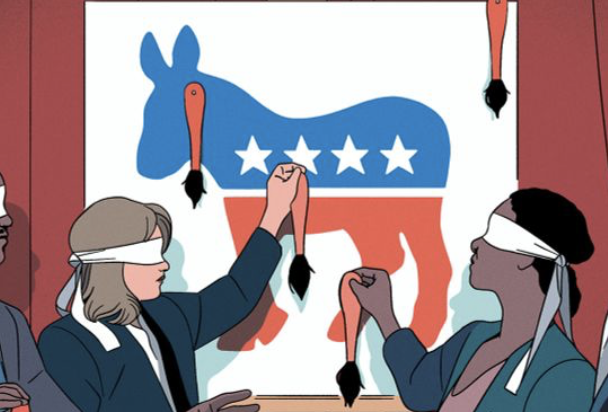Politico just ran this huge article examining how bad the situation for Democrats is in the wake of Trump’s first few weeks of blitzkrieg governing.
Here’s a summary of the key points:
Politico’s latest deep dive reveals a hard truth: the Democrats’ 2024 loss to Trump wasn’t just Kamala Harris’s stumble—it’s a glaring sign of a party in crisis, betrayed by its own broken system. Harris, stepping in after Biden’s abrupt July 2024 exit, came achingly close to victory, falling a mere 230,000 votes short in the Electoral College. Yet Trump swept all seven swing states and the popular vote, a seismic shift that left Democrats reeling. The article uncovers the cracks: a primary system skewed by South Carolina’s lead-off spot, which props up establishment picks while ignoring the broader electorate; a party adrift, hemorrhaging working-class and Latino voters (Starr County flipped 56 points to Trump); and a failure to read the room—voters wanted less immigration (55% by June 2024), but Dems didn’t pivot. Harris’s campaign played it too safe, dodging town halls, as Tim Walz later lamented. Now, with no clear 2028 leader—Pete Buttigieg’s already tweaking his image—and every state tilting right, Democrats face a sobering question: can they reinvent themselves before 2028, or are they doomed to repeat this painful lesson?
The piece highlights several structural problems that contributed to the Democrats’ defeat:
- The Primary System’s Flaws: The Democratic primary process, particularly Biden’s decision to elevate South Carolina to the lead-off spot in 2024, is criticized for favoring establishment candidates. South Carolina’s primary, where Black voters (a key Democratic constituency) make up a large share, propelled Biden in 2020 but didn’t reflect the broader electorate’s mood in 2024. The article suggests this system stifled competition and failed to produce a candidate who could resonate nationally.
- Lack of Ideological Clarity: Democrats are described as lacking a unified vision. The party’s coalition has shifted—relying heavily on college-educated voters while losing ground with working-class and non-white voters, particularly Latinos. For example, Trump’s gains in Latino-heavy areas like South Texas (Starr County flipped 56 points toward him) show the party’s failure to address economic and cultural concerns that resonate with these groups.
- Failure to Adapt to Voter Sentiment: The article points out that Democrats misjudged the electorate’s priorities. Immigration, for instance, became a losing issue—polls showed a dramatic shift from 2020 to 2024, with 55% of voters wanting reduced immigration by June 2024, compared to 28% in 2020. Harris’s campaign didn’t pivot effectively on this or other issues like inflation, where Trump’s messaging (despite its inaccuracies) connected better with voters.
- Campaign Strategy Missteps: Tim Walz, Harris’s running mate, is quoted reflecting on the campaign’s overly cautious approach—avoiding town halls and in-person events that could have humanized Harris. The campaign also struggled with media engagement, with Harris and Walz delaying joint interviews, which allowed Republicans to define her narrative early.
- Internal Party Dynamics: The article notes a lack of leadership and direction post-2024. Potential 2028 contenders like Pete Buttigieg (who quietly removed pronouns from his X profile) and others are already adjusting their public personas, reflecting the party’s uncertainty about its future. Meanwhile, Harris remains a polarizing figure—topping 2028 primary polls with 36% support among Democrats (per a Morning Consult poll) but facing skepticism from donors and party insiders about her electability.
- Broader Electoral Challenges: The piece emphasizes that Democrats are in a weaker position than in 2017, when they unified under a “resistance” banner against Trump. In 2024, all 50 states shifted right, and 13 House Democrats now sit in Trump-won districts, with another 50 in seats Harris won by 9 points or less. This precarious position limits the party’s ability to oppose Trump’s agenda effectively.
The article concludes that while Harris’s loss has been a focal point for blame—some see her as a weak candidate, echoing her 2019 primary struggles—the real crisis lies in the Democratic Party’s inability to adapt its nomination system, messaging, and coalition-building to a changing electorate. It suggests that without addressing these systemic issues, the party risks further losses in 2028.
In short, they are fouling their pants!
After suffering their biggest defeat in decades, Democrats are deeply fractured, rudderless, and struggling to figure out at the most basic level what their message and strategy should be.
— Politico (@politico.com) March 28, 2025 at 8:32 AM
[image or embed]
